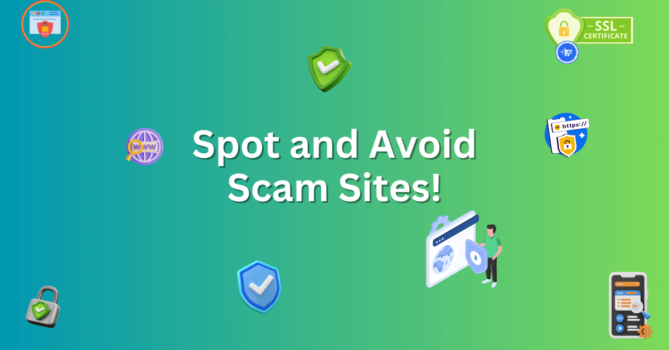The internet is incredible, but it’s also home to countless scam websites that can steal your personal information, money, and identity. Learning how to spot and avoid scam websites is crucial in today’s digital age. With cybercriminals becoming more sophisticated, recognizing the red flags can save you from falling victim to these deceptive schemes.
In this guide, we’ll provide some essential tips on identifying scam websites and the steps you can take to protect yourself. Whether shopping online, looking for job opportunities, or browsing social media, it’s important to stay vigilant and aware of the warning signs. Let’s explore some practical ways to keep your online experience safe.
Check the Website’s URL Carefully
One of the easiest ways to spot a scam website is by examining its URL. Scammers often use slight misspellings of well-known websites, hoping you won’t notice. For instance, instead of “amazon.com,” a scam site might use “amaz0n.com” (with a zero instead of the letter ‘o’). Always double-check the spelling of URLs, and ensure they start with “https://” rather than “http://.” The ‘s’ stands for secure and means the site uses encryption to protect your data.
Check for Poor Website Design and Content
Legitimate businesses invest in professional-looking websites, while scam websites often have poor design and grammar. If the website appears outdated, has low-quality images, or contains numerous spelling mistakes, it’s a big red flag. Scammers often rush to put up sites, so they don’t invest much in making them look trustworthy. Always be cautious if a website looks thrown together or lacks essential details about the company.
Review Contact Information and Company Details
Another key sign of a scam website is the lack of proper contact information. Legitimate businesses will provide a way to reach them, whether it’s an email address, phone number, or physical address. Scam sites, on the other hand, often have vague or missing contact details. Try contacting the company before making any purchases or giving personal information. If they have no real way to be reached, it’s best to steer clear.
Beware of Unrealistic Deals and Offers
We all love a great deal, but if something seems too good to be true, it probably is. Scam websites often lure victims with prices drastically lower than the market average. Whether it’s high-end electronics for half price or luxury items at a deep discount, always be skeptical of deals that seem too perfect. Do a quick price comparison on trusted websites to verify if the deal makes sense.
Check for Reviews and Website Reputation
Before making a purchase or signing up on any website:
- Do your research.
- Look for reviews from other users to see if they’ve had positive or negative experiences.
- Be cautious of websites with little to no reviews, as this could indicate a brand-new scam.
Tools like Whois can also be used to check the website’s age. Scam sites are often newly created, while legitimate businesses typically have a longer online presence.
Use Trustworthy Payment Methods
One way to protect yourself from scam websites is to use secure payment methods like credit cards or PayPal, which offer buyer protection. Avoid wire transfers, money orders, or gift cards, which scammers often request because they’re harder to trace and recover. If a website insists on one of these forms of payment, it’s a strong indicator that it could be a scam.
Look for Security Certificates
Always check for a website’s security certificates, especially if you’re about to enter personal or payment information. Legitimate sites will display trust badges, such as SSL certificates or verification from known organizations like McAfee or Norton. Be cautious if a website lacks these badges or if clicking them doesn’t lead to verification.
Trust Your Instincts
Trust your gut. If something feels off about a website, don’t proceed. Scammers rely on you, ignoring your intuition in favor of their offer. Always prioritize your safety and privacy over convenience.
Conclusion
Knowing how to spot and avoid scam websites is essential for navigating the internet safely. By following these tips—checking the URL, reviewing the website’s content and contact information, being wary of deals that seem too good to be true, and verifying the website’s reputation—you can protect yourself from potential scams. Remember, it’s always better to be cautious and take the extra time to verify a site’s legitimacy than to fall victim to an online scam. Stay safe, and stay informed.









